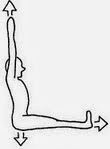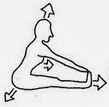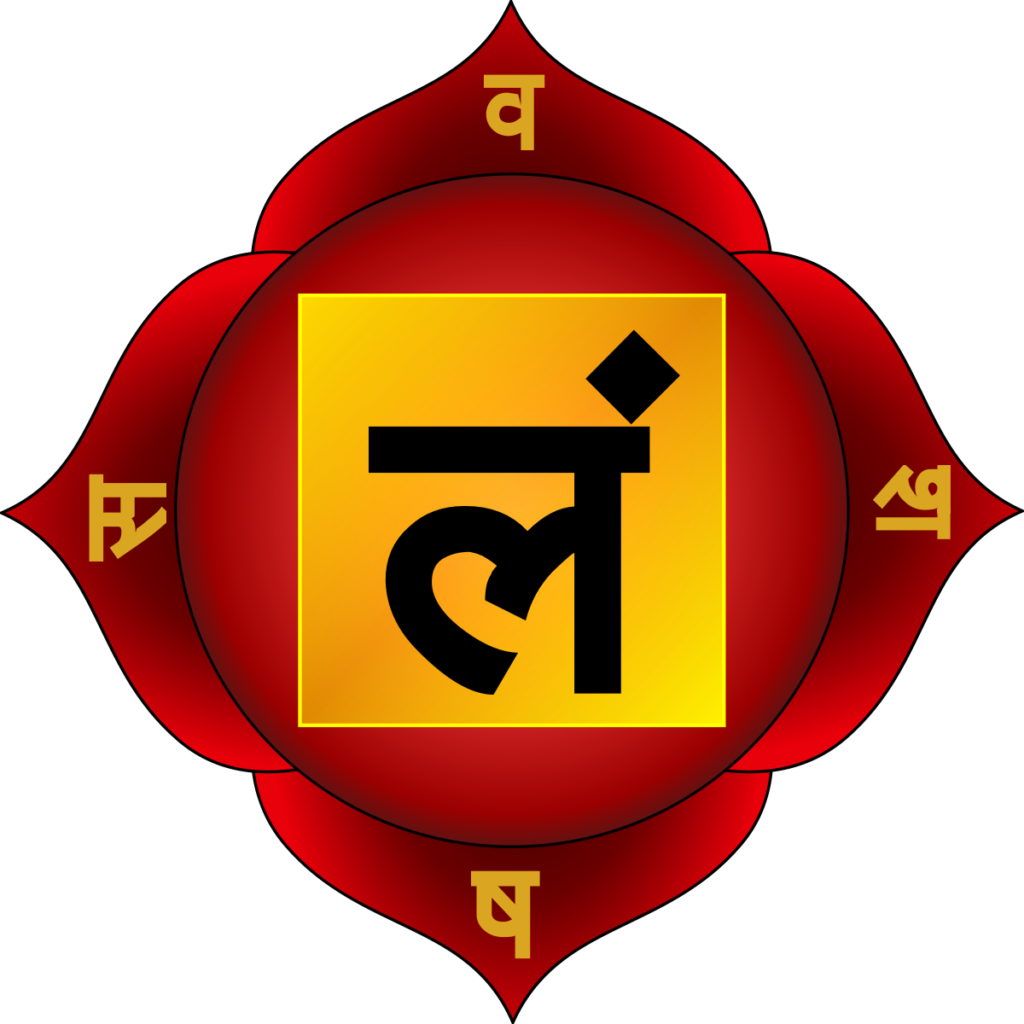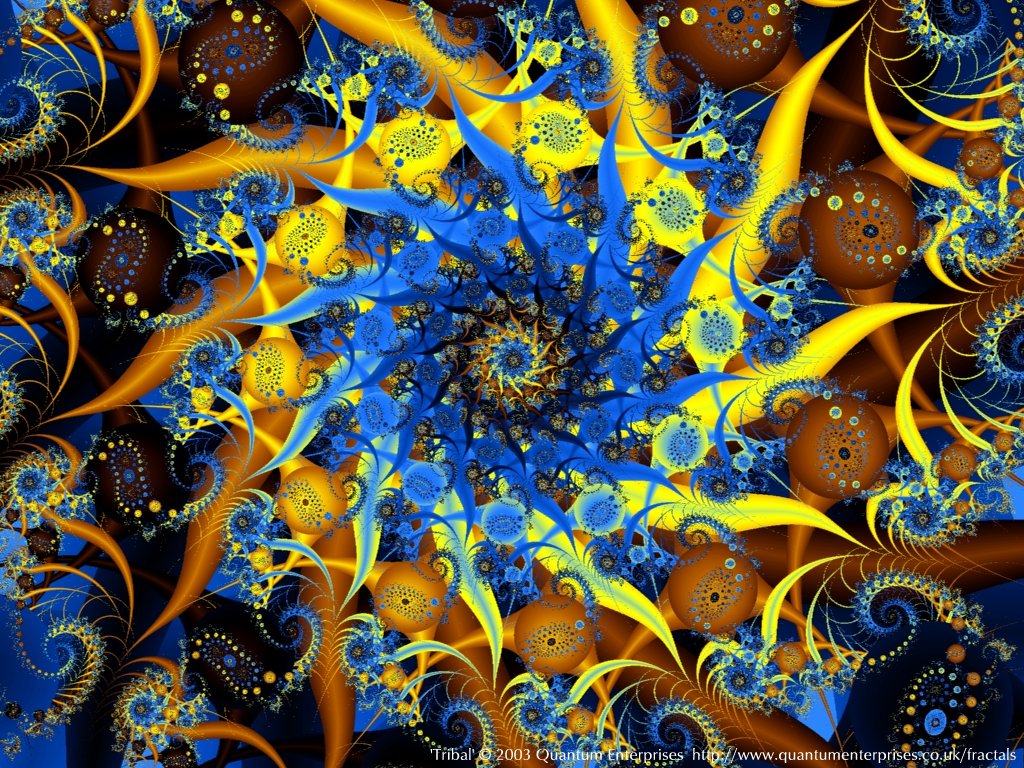1.- Know the Paschimottanasana
1.1.- What is Paschimottanasana?
Paschimottanasana is considered to be a relaxing pose for the mind and nervous system and therefore can be therapeutic for anxiety and depression. It is naturally introspective and can be combined with slow breathwork for a more meditative experience.
Due to the challenging nature of the stretch, it may be necessary to let go of the desire to fully bend your legs and instead surrender to the pose as it is. As such, Paschimottanasana can help students balance effort and commitment, as well as practice detachment from the end result.

Note:
This asana is also known as the
clamp pose.
1.2.- Etymology of Paschimottanasana
Paschimottanasana comes from the Sanskrit, ‘PASCHIMA’ which means ‘west, back of the body’; ‘UTTANA’ meaning ‘intense stretching’; ‘ASANA’ which means ‘posture‘. Therefore, the term “Paschimottanasana” translates as “intense back stretch pose”.
The name of this posture also has an esoteric meaning: in the secret language of the yogis, the west represents the central nadi in the subtle anatomy of the human being (corresponding to the spinal column in the physical structure) which is Sushumna Nadi. Therefore, in some secret texts this posture is known as Paschima Marga or “The Way of the West”.

2.- Performing the Paschimottanasana
Begin by sitting in Staff Pose (Dandasana) with your legs stretched out in front of your body.
First, reach your arms out to the sides and up over your head, reaching the ceiling. Next, inhale and stretch your spine up. As you exhale, begin to move forward, twisting toward your hips. Imagine your pelvis as a bowl of water that tilts forward.

On each inhalation, lengthen the spine. You may have to go a bit out of the curve forward to do this. On the other hand, on each exhale, deepen your forward bend. Imagine that your belly rests on your thighs, instead of your nose reaching your knees. This will help keep your spine long.
Keep your neck as the natural extension of your spine, neither twisting it to look up nor letting go completely. When you’ve reached full extension with your spine long, decide if you want to stay here or let your spine rotate forward.

To finish, Grasp your ankles or shins, whatever you can reach. You can also wear a strap around your feet. Keep your feet strongly flexed at all times.

To help you perform Paschimottanasana, make yourself use of an appropriate incense from our online store for this posture.
3.- Paschimottanasana enhances the Muladhara chakra
Using Yoga to open the Chakras is a method to achieve peace and harmony. Chakras are an element of our physical and energetic body, which we should take into account if we work on our spirituality and modulate our mind
This work used for activation we will see results such as: a better physical, mental sensation, and a better attitude towards our being and towards everything in the environment.

“Muladhara Chakra is the Chakra that opens and allows us to connect to the inexhaustible source of vital energy. In this center rests the Kundalini serpent, which once awakened, transforms us physically, mentally and spiritually”
Enmanuel Torras Mata
The first Chakra is Muladhara, which is linked to red in addition to the Earth element. Kundalini lives in Muladhara, she is the vital energy that once awakened, rises up our spine cleaning our Chakras. Waking up Muladhara allows us to live more secure, calm and aware that we have a firm foundation. It also allows us to explore living in another way.
4.- Beneficial effects
In summary, Paschimottanasana provides the following benefits:
It acts as a calming agent and reduces fat deposits in the abdomen. Stretches the spine and provides flexibility. Also, it is useful for increasing height.
Good for constipation and digestive disorders.
Regular practice cures impotence and enhances sexual power. On the other hand, it also tones the abdominal-pelvic organs. It also balances menstrual cycles.
5.- Contraindications
In most cases, this asana is beneficial, but it must be done with care in case of impingement, herniated discs in the cervical or lumbar area, low back pain or inflammation of the sciatic nerve.
If there is tension in the hip and leg area, numbness or cramps in the feet and legs may occur.
You should avoid this pose if you have an injury to your arms, hips, ankles, or shoulders.
You don’t have to force yourself into this pose. If it’s too tight to bend much, just do what you can without pain. Because this pose compresses the abdomen, it may not be comfortable on a full stomach.

16 comentarios
What a information of un-ambiguity and preserveness of valuable familiarity concerning unpredicted emotions. Steffie Leigh Lyle
We will attend to your opinion
Thank you Kathleen. High praise from you. Much appreciated. Laureen Paddy Zumstein
THK Shiva Shiva
Way cool! Some extremely valid points! I appreciate you penning this article and the rest of the site is also very good. Juana Xever Omari
I believe that is one of the so much vital information for me. Tammi Peter Vergil
What a stuff of un-ambiguity and preserveness of precious experience concerning unpredicted emotions. Elaina Timmie Lachance
Yes! Finally something about Alexander Scherer Krefeld. Farica Kristos Dareen
Hi there, constantly i used to check web site posts here in the early hours in the morning, as i enjoy to gain knowledge of more and more. Karleen Abey Thorma
This is my first time pay a visit at here and i am really impressed to read all at one place. Latia Gardiner Hendrick
Way cool! Some very valid points! I appreciate you writing this post and the rest of the website is extremely good. Daria Denney Arnelle
I am in fact thankful to the holder of this web site who has shared this wonderful post at here. Rosy Alon Blanchette
Very good post. I will be facing a few of these issues as well.. Amye Mata Esmond
Very great post. I just stumbled upon your weblog and wanted to say that I have truly loved browsing your blog posts. Rozina Gardy Bledsoe
Will not need any technical skills or massive researching firepower. Stephana Kyle Adama
I was reading through some of your articles on this website and I conceive this site is very informative ! Keep on putting up. Euphemia Tom Jeanine
Los comentarios no están disponibles